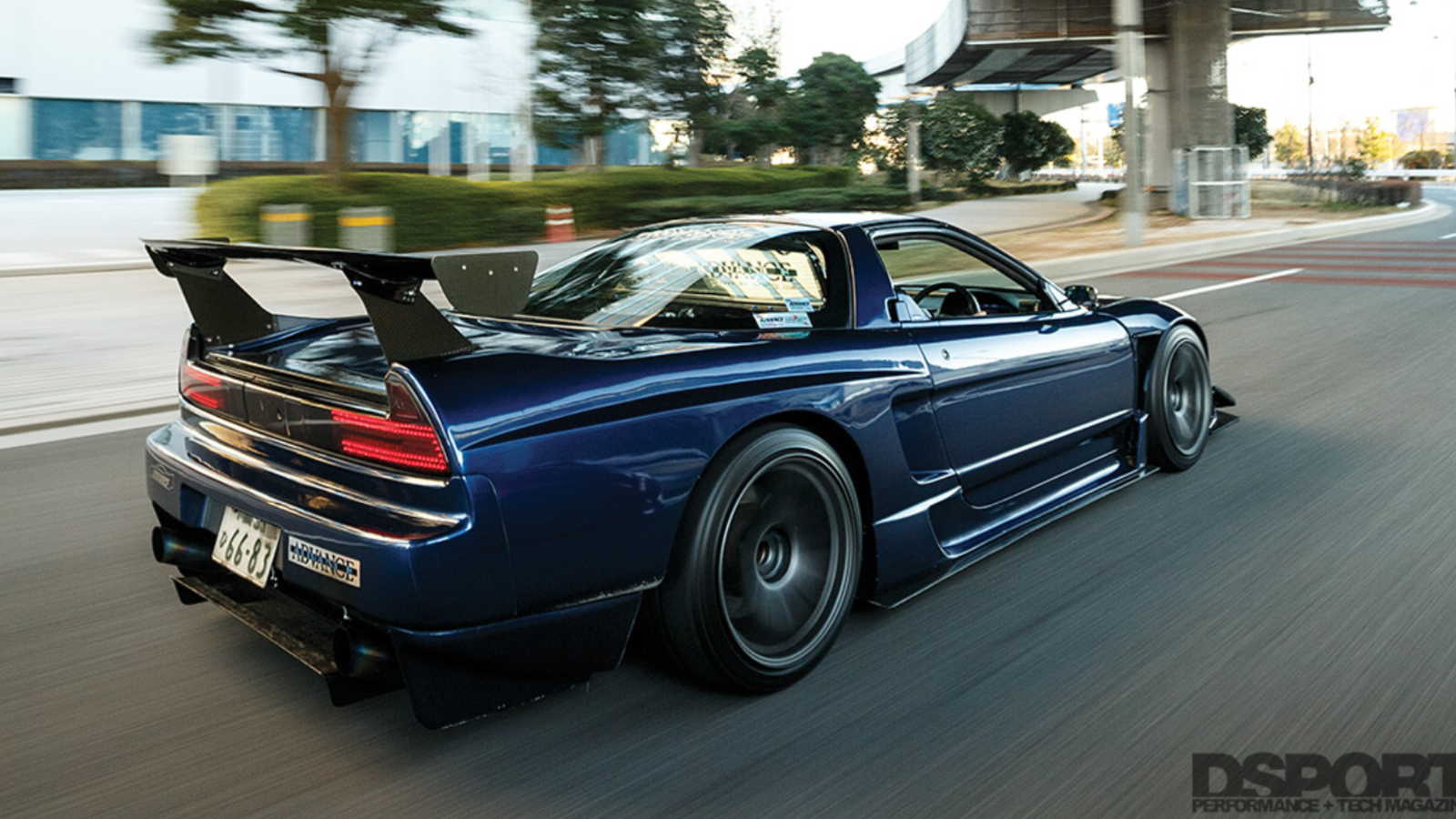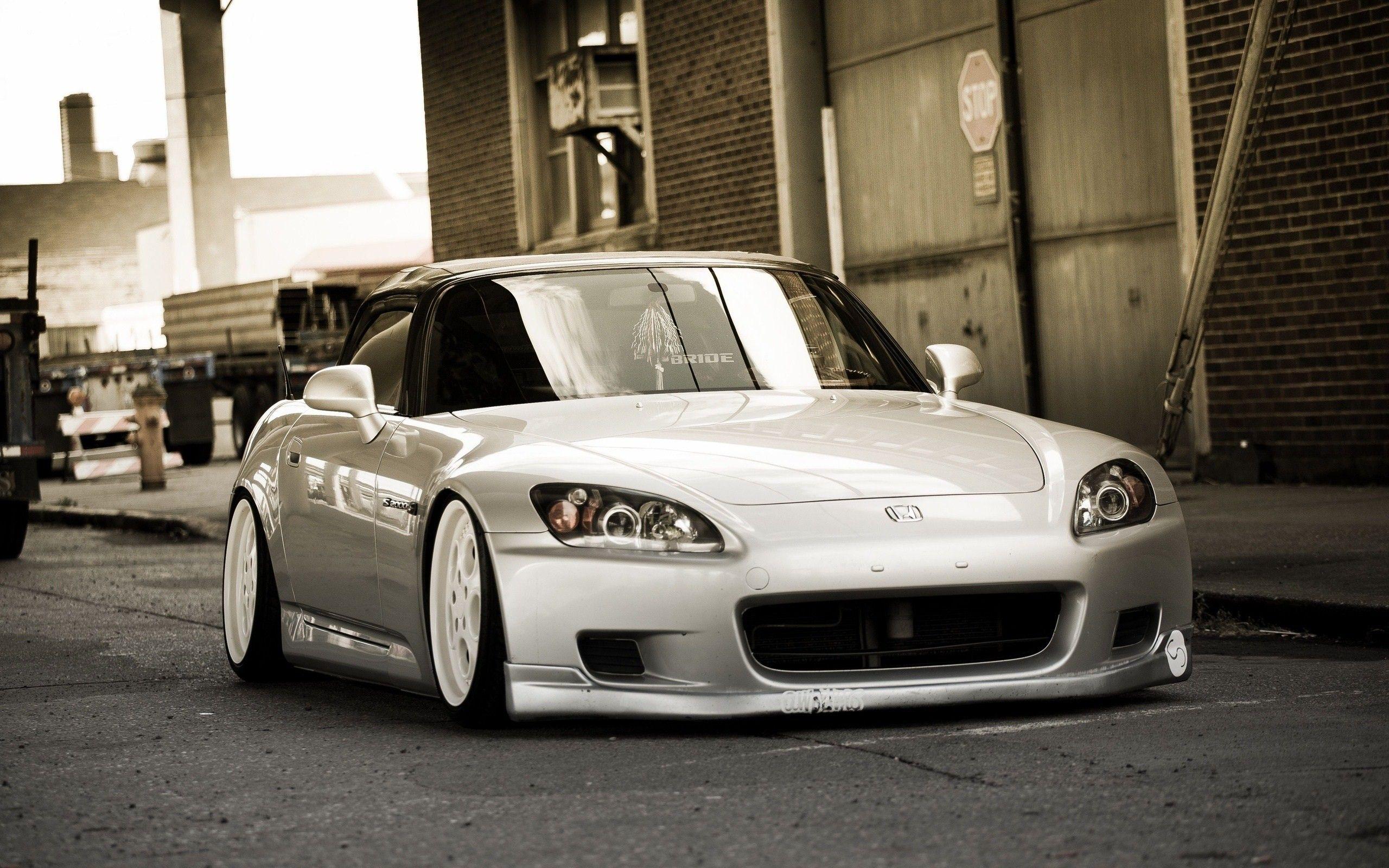


The Honda NSX, marketed in North America as the Acura NSX, is a two-seat, mid-engine coupe sports car manufactured by Honda. The origins of the NSX trace back to 1984, with the HP-X (Honda Pininfarina eXperimental) concept, which was a mid-engine 3.0 L V6 engine rear wheel drive sports car. Honda committed to the project, with the intention of meeting or exceeding the performance of the then V8 engine Ferrari range, while offering reliability and a lower price point. The concept thus evolved and had its name changed to NS-X, which stood for "New", "Sportscar" "eXperimental", although the production model was launched as the NSX. Gordon Murray, the designer of the McLaren F1 supercar, stated that he used the NSX as the inspiration for the F1 after test driving many high performance cars and finding the NSX chassis performed the best. Murray stated that the design was "monumental" to sportscar design. He found that the car could easily have handled more power and attempted to convince Honda to develop a more powerful engine, but they declined. This resulted in Murray developing the F1 with a BMW engine, but he was so fond of the NSX that he bought one for personal use and drove it for 75,000 km. Murray stated that the NSX was "dear to his heart".
The NSX was designed by a team led by Chief Designer Masahito Nakano and Executive Chief Engineer Shigeru Uehara. It benefited from advanced aerodynamics and styling inspired by an F-16 fighter jet cockpit and input from the late Formula One World Champion, Ayrton Senna, during the final development stages. This NSX became the world's first mass-produced car to feature an all-aluminium body. It was powered by an all-aluminium 3.0 L V6 engine, which featured Honda's VTEC (Variable Valve Timing and Lift Electronic Control) system developed in the 1980s, a 5-speed manual transmission, or starting in 1994 the SportShift 4-speed automatic transmission, also known as F-Matic, which allows the option of conventional automatic shifting or manually shifting with a fingertip shift lever on the steering column. It was presented at the 1989 Chicago Auto Show and was built in a purpose-made factory in Japan, for sale from 1990. It was originally available as a coupé and, from 1995, a targa top. It underwent a performance upgrade in 1997, which saw the arrival of a larger 3.2 L V6 engine, and a facelift in 2002 where the pop-up headlights were removed. The first generation NSX was discontinued in 2005. North American models were sold as the Acura NSX. Cars with the 3.0 L C30A engine are referred to as NA1 models, while the 3.2 L C32B engine cars are known as NA2 models.



The Honda S2000 is an open top sports car that was manufactured by Japanese automobile manufacturer Honda, from 1999 to 2009. First shown as a concept car called the SSM at the Tokyo Motor Show in 1995, the production version was launched on April 15, 1999, to celebrate the company's 50th anniversary. The S2000 is named for its engine displacement of two liters, carrying on in the tradition of the S500, S600, and S800 roadsters of the 1960s. S2000 logo Several revisions were made throughout the car's production life, including changes to the engine, gearbox, suspension, interior and exterior. Officially two variants exist: the initial launch model was given the chassis code AP1; though cosmetically similar, the facelifted version, known as the AP2 in North America and Japan, incorporated significant changes to the drivetrain and suspension. Production of the S2000 ceased on August 19, 2009. The Honda S2000 was notable for its exceptional specific power output of about 124 hp per litre, or about two horsepower per cubic inch, the highest of any mass production, naturally aspirated engined car. The S2000 has since become a legitimate modern classic car, having seen a significant appreciation in price for valued examples in good condition. In the JDM community and the car community as a whole, the most sought-after models are special edition productions such as the CR (Club Racer) in the USA market; the standard AP1 and AP2 models have achieved collectible status as well.
SPECS: With a fuel consumption of 10 litres/100km - 28 mpg UK - 24 mpg US (Average), 0 to 100 km/h (62mph) in 6.2 seconds, a maximum top speed of 149 mph (240 km/h), a curb weight of 2910 lbs (1320 kgs), the S2000 2.0 VTEC has a naturally-aspirated Inline 4 cylinder engine, Petrol motor. This engine produces a maximum power of 241 PS (238 bhp - 177 kW) at 8300 rpm and a maximum torque of 208 Nm (153 lb.ft) at 7500 rpm. The power is transmitted to the road by the rear wheel drive (RWD) with a 6 speed Manual gearbox. On the topic of chassis details responsible for road holding, handling behavior and ride comfort, the S2000 Stock tire sizes are 215 / 45 on 17 inch rims at the front, and 245 / 40 on 17 inch rims at the rear. For stopping power, the S2000 2.0 VTEC braking system includes Vented Discs at the front and Discs at the rear. The S2000 model is a car manufactured by Honda, sold new from year 2004.



EK9 refers to the first Civic Type-R, which is based on the sixth generation of the Honda hatchback. Under the bonnet is a 1.6-litre B16B four-pot producing 182bhp at a screaming 8200rpm. That'll get you from 0-62mph in around six seconds. Is EK9 a FWD? The Honda Civic Type R (EK9) has a naturally aspirated four cylinders in line transverse front engine providing a maximum torque of 160 Nm available from 7500 rpm and a maximum power outpup of 185 PS available at 8200 rpm transmitted to the 15 inch front wheels by a manual 5 speed gearbox. With 182 horsepower at 8,200 rpm and 118 lb ft at 7,500 rpm, the EK9 Civic Type R was no slouch and could go from 0-100 km/h (62 mph) in as little as 6.7 seconds. Along with the hand ported engine, Honda also fitted a front helical limited-slip differential and a close-ratio 5-speed manual transmission. On the inside, the EK9 Type R was given a red themed interior, with red Recaro bucket seats, red door cards, and red Type R floor mats. To top it off, Honda fitted the Type R with a titanium shift knob and a Momo leather-wrapped steering wheel. In 1998, Honda launched the Civic Type R Motor Sports Edition. This car came with steel wheels, no power windows or steering, no air conditioning, no radio and the same red Type R interior. The Type Rx Civic was fitted with a CD player, auto air condition, body coloured retractable electric door mirrors, power windows, aluminium sports pedals, a keyless entry system, and a carbon centre panel. In 1999. Honda tuning company Spoon Sports produced a N1 racing version of the Type R Civic that featured a B16B engine with a redline of 11,000 rpm.
A product of the 5th generation of compact Hondas, the EG6 S iR-II is from the Japanese collection of the brand. Available only in its 3-door configuration, the EG6 S iR-II was produced between 1991 and 1993. The fifth generation Honda Civic is an automobile produced by Honda from 1991 until 1995. It debuted in Japan on September 9, 1991. At its introduction, it won the Car of the Year Japan award for the second time. Fifth generation cars were larger than their predecessors, had more aerodynamic bodies, and the wheelbase was increased to 257 cm (101.3 inches)--for the three-door hatchback—and to 262 cm (103.2 inches)--for the four-door sedan. The Civic Shuttle station wagon was not part of the fifth generation and was dropped for overseas markets, while the previous generation wagon continued in Japan and Europe. This generation of Civic used lightweight materials to create a fuel-efficient economy car. Compared to the previous generation, the cowl was raised, which allowed for more suspension travel. Along with that change, the ride became softer than that of the previous generation, which provided a more compliant ride at expense of crisper handling. In addition, vehicles with the larger 1.6 L SOHC VTEC 125 PS (92 kW; 123 hp) engines such as the Si hatchback and EX coupe models found in the United States, provoked popularity of the (relatively) high-performance 1.6 L inline-four segment. In South Africa, a unique model with the B18B3 engine from the Acura Integra RS was specially built to fill the gap left by the absence of the DOHC B16A VTEC engine in the range.
The Type R is built with a 6-speed manual transmission with Rev-match control. The chassis is made from lightweight aluminum to give the car greater agility and a more rigid body. The Civic Type R has three driving modes: Comfort, Sport, and +R. Is the Honda Civic Type R fast? Well the 2021 Honda Civic Type-R comes well-equipped with a 2.0 liter Inline 4-cyl that generates 306 hp @ 6500 rpm with 295 lb-ft @ 4500 rpm of torque. It takes only 5.15 seconds to reach 60 MPH from a standstill, and it can run the quarter-mile in 13.2 seconds, making it the fastest car in its class! The design is based on the Civic Hatchback, with a winged carbon fiber splitter with red accent line, slatted ducts, diamond-mesh air intakes, red 'H' badge above a new air vent at the nose of the car, new air intake on the hood, an air scoop sited centrally in a trapezoidal recess, smoked lenses for the LED headlights, indicators and side repeaters, carbon fiber side skirts, 20-inch piano black alloy wheels with red accents, 245/30 R20 high-performance tires, enlarged wheel arches, a carbon fiber diffuser which runs below the wider rear bumper, 3 tailpipes with a pair of directional strakes at each side, central tailpipe in bright metallic red and unique peaks at the roof flanks that point backward. Engine and other specifications: The FK8 Civic Type R uses the same engine, a turbocharged inline-4, from its predecessor but power has increased to 320 PS (235 kW; 316 hp) in the European and Japanese version but remains the same 310 PS (228 kW; 306 hp) in other markets. The engine is mated to a close-ratio 6-speed manual transmission continuing the tradition of its predecessors with limited-slip differential as standard. The aerodynamic elements increase downforce even further as compared to the outgoing model. The FK8 has a top speed of 272 km/h (169 mph) making it the fastest Civic Type R model to date. In back-to-back testing involving an FK8 and FK2 Type R, the reviewers praised the FK8's comfortable ride and feedback and criticised the FK2's harsh ride on the road and worse handling when the R+ driving mode was activated. The reviewers also complained about the FK2's interior being dated but stated that this was due to the model's late arrival at the end of the base model's production run.
// Source: Wikipedia